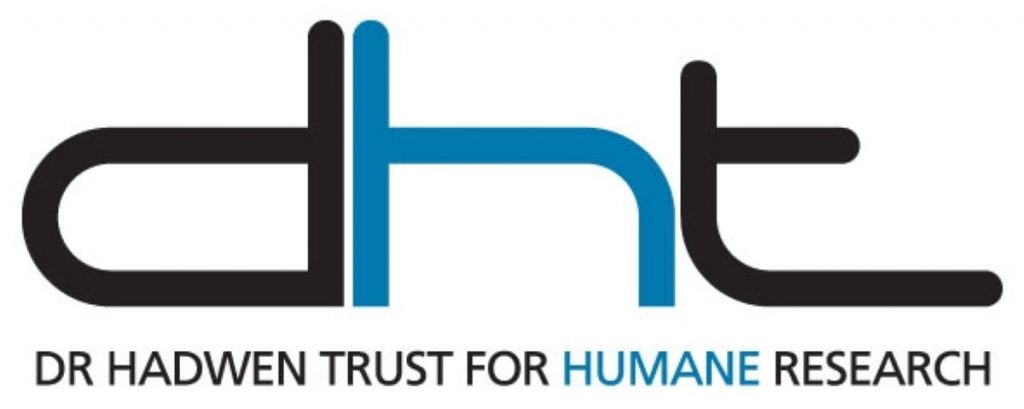Dr Hadwen Trust for Humane Research severely disappointed by 3% rise in UK animal procedures – a 24 year high
Wednesday, 13 July 2011 –Statistics released by the Home Office today show that the number of animals used in scientific procedures has increased by 3%, the highest since 1987. In 2010, over 3.72 million animal experiments were started, involving 3.6 million individual animals. The Dr Hadwen Trust for Humane Research (DHT) was appalled to learn that despite the growing consensus in the scientific community that challenges the validity of animal use for human health, animal use has reached its highest level in 24 years.
The 3% rise, totalling over 105,000 animals, is largely due to an increasing use of genetically modified (GM) animals. The number of GM animals has increased by 6%, including a total of 77,000 mice. This increase highlights the on-going belief that GM animals can be used to develop better models for human disease. Although the potential of genetic modification when applied to human therapies is very promising, the results gained from using GM animals to study human diseases have been disappointing1.
The DHT, the UK’s leading medical research charity that funds and promotes the development of techniques to replace animal experiments, responded to the announcement with disappointment as the statistics highlight that despite figures which show that nine out of ten medicinal compounds2 tested and found to be safe on animals, were found unsafe or toxic when tested in clinical trials on humans, the medical industry continues to rely heavily on animal experiments.
The consistently high number of animals used in fundamental research, which has increased by 10% this year, is also unacceptable given the considerable progress that has been achieved in the development of alternatives to animal experiments. The establishment of the National Centre for the Replacement, Reduction and Refinement of Animals in Research (NC3Rs) in 2004 was particularly promising and showed that the UK is leading the world in progressing non-animal research. However, this year’s Home Office figures show that much more still needs to be done3.
This is therefore a crucial time to highlight the challenges of the use of animals in experiments, together with the need to develop more efficient alternatives, as the Home Office has launched a public consultation on the transposition of the new EU Directive 2010/63/EU into the UK’s laws governing the use of animals in experiments4.
Kailah Eglington, Chief Executive of the DHT, said: “It is very disappointing that there has been a 3% rise in levels of animal procedures since 2009. Therefore, the recent announcement of a public consultation on the new EU Directive provides a vital opportunity for the Government to hold true to its Coalition pledge to reduce the use of animals in experiments and we urge the Government to focus on the development of techniques to replace animal use for scientific purposes.”
-ENDS-
Further information from:
Amanda Gent
The Dr Hadwen Trust
Suite 8 Portmill House
Portmill Lane
Hitchin, Hertfordshire SG5 1DJ
T: +44 (0)1462 436819
F: +44 (0)1462 436844
Notes:
About the DHT:
The DHT funds cutting-edge research at universities across the UK. The projects carried out by its grant holders aim to replace the use of animals in medical research and result in more human-relevant, high quality research. Current projects include research into neurodegenerative diseases, such as Multiple Sclerosis, Parkinson’s, Alzheimer’s disease, cancer and also infectious, respiratory, genetic diseases amongst others.
1) Only a minority of researchers are focusing on the implementation of existing human-relevant methods and the development of new techniques, despite the growing general consensus amongst the scientific community that these methods are more scientific and cost effective.
2) In 2005, the FDA published that 92% of medicinal compounds passing animal tests failed when tested on humans. i.e. 9 out of 10 medicinal compounds which are found to be safe when tested on animals (currently a legal requirement), are unsafe when tested on humans
3) For example, in an attempt to study cystic fibrosis in the early 90s, mice were genetically modified to have the same mutations that cause the genetic defect in humans. This was hailed as a medical breakthrough, but hopes crashed when the mice developed different symptom patterns from human patients. Fundamental differences in anatomy, pharmacology and physiology between mice and people accounted for the variations. Although the induced gene mutations were identical to those of patients, they operated in an overwhelmingly mouse genetic context. In fact, the same gene mutation can produce variable symptoms even in different mouse breeds.
4) The new EU Directive 2010/63/EU updates and replaces the 1986 Directive on the protection of animals used for scientific purposes. The UK and other EU Member States are now working on the implementation of the new law in the UK which has to be transposed nationally in January 2013.





-01.png)